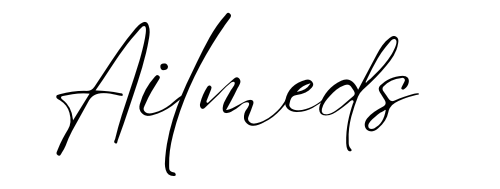Pansexuality is a term that has gained increasing attention and relevance in today’s diverse spectrum of sexual orientations. This blog post aims to delve into the multifaceted nature of pansexuality, exploring its meaning, historical background, societal implications, and the challenges and triumphs faced by those who identify as pansexual. Through this comprehensive exploration, we seek to provide a deeper understanding of pansexuality, dispel common myths, and highlight the importance of acceptance and support in our ever-evolving society. Join us as we embark on this informative journey into the world of pansexuality, a topic that is as complex as it is crucial for fostering a more inclusive and empathetic world.
Table of Contents
Definition and Understanding of Pansexuality
Pansexuality is a term that encapsulates a significant aspect of human sexuality, yet it is often misunderstood or overlooked. At its core, pansexuality refers to the potential for emotional, romantic, or sexual attraction towards people of any gender identity or sex. This orientation is distinct in its recognition of the wide spectrum of gender identities, extending beyond the traditional binary notion of male and female.
Unlike bisexuality, which implies attraction to two genders, pansexuality is characterized by its inclusivity, acknowledging the existence of non-binary, genderqueer, transgender, and intersex individuals as potential romantic or sexual partners. This broad scope of attraction is what sets pansexuality apart, emphasizing the concept that attraction is not limited or defined by gender.
The essence of pansexuality lies in its fluidity. Pansexual individuals may experience attractions that are dynamic and not confined to gender labels. It’s important to note that being pansexual doesn’t necessarily mean an equal attraction to all genders; rather, it indicates the openness to the possibility of attraction, regardless of gender.
Understanding pansexuality also involves recognizing its validity as a sexual orientation. It is a genuine and natural identity for many people, and not a phase or a trend. Acceptance and acknowledgment of pansexuality are crucial for the broader understanding and acceptance of the LGBTQ+ community.
Historical Context and Evolution
The concept of pansexuality has a rich and evolving history that reflects changing societal attitudes towards gender and sexuality. Understanding the historical context of pansexuality helps in appreciating its significance in the modern world.
The term pansexuality itself is relatively new, having gained prominence in the late 20th and early 21st centuries. However, the concept of attraction not limited by gender has existed throughout human history. Ancient civilizations, such as the Greeks and Romans, had societal norms that included relationships and attractions beyond the binary genders, though they did not have a specific term akin to pansexuality.
In more recent history, the early 1900s saw the emergence of more nuanced understandings of sexuality, with pioneers like Sigmund Freud challenging the rigid norms of sexual attraction. However, it wasn’t until the latter part of the 20th century that conversations around non-binary and gender-inclusive sexual orientations gained significant momentum. The LGBTQ+ rights movements played a crucial role in this, advocating for recognition and acceptance of diverse sexual orientations, including pansexuality.
The term pansexuality began to be more widely used in the 1990s and 2000s, paralleling the growing recognition of gender diversity. It was during this time that the distinction between pansexuality and other sexual orientations like bisexuality became more defined. The introduction of the internet and social media further propelled the visibility and understanding of pansexuality, allowing individuals to connect, share experiences, and find community.
In contemporary times, pansexuality is increasingly recognized as a valid and important sexual orientation. It is often discussed in the context of the broader LGBTQ+ community and is an integral part of conversations around sexual and gender diversity.
Common Myths and Misconceptions
Addressing common myths and misconceptions is crucial in fostering a better understanding of pansexuality. Despite growing awareness, several misconceptions persist, often leading to confusion and misinformation about what it means to be pansexual. Here, we debunk some of these myths to clarify the reality of pansexuality.
Myth 1: Pansexuality and Bisexuality are the Same
- While both pansexuality and bisexuality involve attraction to more than one gender, they are not the same. Bisexuality typically refers to attraction to both males and females, whereas pansexuality is the attraction to people of any gender identity. This includes non-binary, genderqueer, and transgender individuals, making pansexuality more inclusive of the gender spectrum.
Myth 2: Pansexuality is Just a Phase or Trend
- A common misconception is that identifying as pansexual is merely a phase or a trend. However, pansexuality is a legitimate sexual orientation, just like being gay, straight, or bisexual. It is a deep-seated part of an individual’s identity and not something that changes with trends or phases.
Myth 3: Pansexuals are Attracted to Everyone
- A significant misunderstanding about pansexuality is the idea that pansexual individuals are attracted to everyone they meet. In reality, just like any other sexual orientation, pansexual people have their own preferences and standards. Their attraction is not limited by gender, but this does not equate to an attraction to every individual.
Myth 4: Pansexuality Doesn’t Exist
- Some people believe that pansexuality doesn’t exist or is not valid. This is a harmful myth that denies the existence and experiences of pansexual individuals. Pansexuality is a real and valid orientation, recognized by both the LGBTQ+ community and psychologists.
Myth 5: Pansexual People are Promiscuous
- The stereotype that pansexual individuals are promiscuous is both unfounded and damaging. Sexual orientation, including pansexuality, does not inherently determine one’s sexual behavior or choices. Pansexual people, like others, may choose a range of lifestyles from monogamous to polyamorous.
Understanding and dispelling these myths is essential in creating a more inclusive and respectful society. Recognizing the reality of pansexuality and rejecting misconceptions helps in supporting the dignity and validity of those who identify as pansexual. Education and open conversation are key tools in this endeavor, allowing for a greater understanding of the diverse spectrum of human sexuality.
Pansexuality and Relationships
Exploring the dynamics of pansexuality in the context of relationships provides insight into how pansexual individuals experience love and attraction. Understanding this aspect of pansexuality is important for a comprehensive view of the orientation.
Pansexuality in relationships is characterized by the potential for emotional and romantic attraction to people irrespective of their gender identity. This means that a pansexual individual can be attracted to someone who is male, female, non-binary, transgender, or of any other gender identity. The key factor here is the person, their personality, and connection, rather than their gender.
Key Aspects of Pansexual Relationships:
- Beyond Gender Binaries: One of the most significant aspects of pansexuality is the ability to form connections that transcend traditional gender binaries. This openness can lead to diverse and unique relationship dynamics.
- Emotional Connection: For many pansexual individuals, emotional and personal compatibility takes precedence over gender identity. This means that their relationships are deeply rooted in the personal traits and qualities of their partners.
- Misunderstandings and Acceptance: Navigating a world where sexual orientation is often viewed in binary terms can be challenging for pansexual individuals. Misunderstandings about pansexuality can sometimes lead to difficulties in relationships, especially with partners who may not fully understand or accept the concept.
- Monogamy and Polyamory: Like anyone else, pansexual individuals may choose various forms of relationships, from monogamous to polyamorous arrangements. Their sexual orientation does not predetermine their choice in this regard.
- Communication is Key: Open and honest communication is vital in relationships involving pansexual individuals, as with any relationship. Discussing expectations, boundaries, and understandings of pansexuality can foster stronger, more meaningful connections.
- Challenges in Society: While society is gradually becoming more accepting, pansexual individuals may still face challenges in terms of societal acceptance. This can impact relationships, especially in contexts where pansexuality is less understood or accepted.
Pansexuality and relationships is a vast and varied topic, reflecting the diversity of human experiences in love and attraction. Understanding this diversity is crucial in appreciating the full spectrum of pansexuality. It’s important to recognize that relationships involving pansexual individuals are as varied and complex as any other, defined not by the orientation itself but by the individuals involved and their unique connection.
Support and Resources
For individuals who identify as pansexual, finding supportive communities and resources can be crucial for their well-being and acceptance. Fortunately, there are various support systems and resources dedicated to helping those who identify with pansexuality. These resources provide information, support, and a sense of community, which are essential in navigating the challenges associated with being pansexual in a predominantly heteronormative society.
Key Resources and Support Systems for Pansexual Individuals:
- LGBTQ+ Organizations: Many LGBTQ+ organizations offer specific support for pansexual individuals. These can include counseling services, educational materials, and advocacy programs. Organizations such as GLAAD, PFLAG, and The Trevor Project are notable examples that provide resources and support for a range of sexual orientations, including pansexuality.
- Online Communities and Forums: The internet offers a vast array of online communities where pansexual individuals can find support and connect with others who share similar experiences. Websites, forums, and social media groups dedicated to pansexuality and broader LGBTQ+ issues can be valuable spaces for sharing stories, advice, and finding solidarity.
- Educational Resources: Education plays a significant role in understanding and accepting one’s sexual orientation. Books, articles, and websites that provide accurate information about pansexuality are essential. These resources can help individuals understand themselves better and assist others in learning about the orientation.
- Counseling and Mental Health Services: Access to mental health professionals who are knowledgeable about LGBTQ+ issues, including pansexuality, is crucial. These services can offer support for the unique challenges faced by pansexual individuals, including issues related to identity, relationships, and societal acceptance.
- Support Groups: Local or online support groups can be a great way for pansexual individuals to connect with others who understand their experiences. These groups provide a safe space to discuss challenges, share experiences, and offer mutual support.
- Events and Meetups: Participating in LGBTQ+ events, pride parades, and meetups can be empowering for pansexual individuals. These events not only provide a platform for celebration and visibility but also an opportunity to meet others from the community and build supportive networks.
- Hotlines and Help Lines: For immediate support, especially in times of crisis, hotlines and helplines can be invaluable. Many countries have dedicated LGBTQ+ helplines that offer confidential advice and support.
Access to the right support and resources is essential for the well-being of individuals who identify with pansexuality. These resources not only offer assistance and information but also help in building a community that understands and embraces the diversity of sexual orientations. Whether through organizations, online platforms, or local communities, having access to these resources can significantly impact the lives of pansexual individuals in positive ways.
Mental Health and Well-being
The topic of mental health is particularly pertinent in the context of pansexuality, as individuals who identify as pansexual can face unique challenges that impact their mental well-being. Recognizing and addressing these mental health needs is crucial for the overall well-being of pansexual individuals.
Understanding the Mental Health Challenges:
- Stigma and Misunderstanding: Pansexual individuals often face stigma and misunderstanding due to a lack of awareness about pansexuality. This can lead to feelings of isolation, rejection, or even internalized negativity about their sexual orientation.
- Identity Acceptance: Struggles with self-acceptance are common, especially if an individual is in an environment that is not supportive of pansexuality. Coming to terms with one’s identity in the face of societal norms can be a significant mental health challenge.
- Relationship Dynamics: Navigating relationships can be complex for pansexual individuals, who may face unique challenges related to their orientation. This can include difficulties in finding accepting partners or dealing with misconceptions in relationships.
- Social Support: Lack of social support, whether from family, friends, or the broader community, can have a profound impact on the mental health of someone who identifies as pansexual. Social isolation and loneliness are common issues.
- Discrimination and Minority Stress: Experiences of discrimination, whether overt or subtle, can contribute to what is known as ‘minority stress,’ which can lead to increased levels of anxiety, depression, and other mental health issues.
Strategies for Supporting Mental Health:
- Seeking Professional Help: Consulting with mental health professionals, especially those experienced in LGBTQ+ issues, can provide essential support and coping strategies.
- Building a Support Network: Creating a network of supportive friends, family members, or others in the LGBTQ+ community can provide a sense of belonging and reduce feelings of isolation.
- Educating Oneself and Others: Understanding pansexuality and educating those around you can help in building a supportive and accepting environment.
- Self-Care Practices: Engaging in self-care practices, such as mindfulness, exercise, and pursuing hobbies, can be beneficial for mental well-being.
- Advocacy and Involvement: Being involved in advocacy work or LGBTQ+ community activities can provide a sense of purpose and community connection, which can be uplifting for mental health.
Addressing the mental health and well-being of pansexual individuals involves both personal and community efforts. It’s about creating environments that are not only accepting of pansexuality but are also actively supportive and inclusive. Mental health resources, support systems, and an overall culture of understanding are vital in ensuring the well-being of those who identify as pansexual.
Youth and Education
The intersection of youth and education with pansexuality is a crucial area for fostering understanding and acceptance from an early age. Educating young people about pansexuality and providing support for those who identify as pansexual are key steps in creating inclusive and respectful environments in educational settings.
Challenges Faced by Pansexual Youth:
- Lack of Awareness: Many young people face a lack of awareness about pansexuality, both in themselves and in others. This can lead to confusion and a sense of isolation if they don’t have access to accurate information.
- Bullying and Harassment: Unfortunately, bullying and harassment are still common issues for LGBTQ+ youth, including those who identify as pansexual. This can have a significant impact on their mental health and academic performance.
- Peer Acceptance: Peer acceptance is a critical aspect of a young person’s life. Pansexual youth might struggle with acceptance among their peers due to misunderstandings or stigma associated with their sexual orientation.
Educational Strategies and Support:
- Inclusive Curriculum: Implementing an inclusive curriculum that covers a range of sexual orientations, including pansexuality, can educate students about diversity and promote acceptance.
- Supportive School Policies: Schools should have policies in place that specifically protect LGBTQ+ students, including those who are pansexual, from discrimination and bullying.
- Training for Educators: Educators should receive training on LGBTQ+ issues, including pansexuality, to support them in creating an inclusive and understanding classroom environment.
- Resources for Students: Providing resources, such as access to counseling and LGBTQ+ support groups, can help pansexual youth feel supported and understood.
- Peer Education Programs: Programs that involve students in educating their peers about LGBTQ+ issues, including pansexuality, can foster a more inclusive and supportive school culture.
- Parental and Community Involvement: Engaging parents and the broader community in education and dialogue about pansexuality and LGBTQ+ issues can create a more supportive environment for young people.
Addressing the needs of pansexual youth in educational settings is about more than just preventing discrimination; it’s about actively creating a supportive and inclusive environment. Through education, supportive policies, and community involvement, schools can play a pivotal role in the well-being and acceptance of pansexual students. This not only benefits those who identify as pansexual but also fosters a broader culture of understanding and respect among all students.
Conclusion
The journey through these topics highlights the importance of understanding and accepting pansexuality as a valid and meaningful sexual orientation. It underscores the need for continued education, advocacy, and support to foster a society that not only acknowledges but also celebrates the diversity of human sexuality.
In a world that is rapidly evolving, the conversation about pansexuality and its place in our social fabric is more relevant than ever. It is a call to action for inclusivity, empathy, and respect. By embracing the diversity that pansexuality represents, we move closer to a world where every individual is valued for who they are, irrespective of whom they love.
As we look towards the future, let’s carry forward the spirit of understanding and acceptance. Let’s continue to educate ourselves and others, provide support to those who need it, and advocate for a world that respects and celebrates diversity in all its forms. The journey towards a more inclusive society is ongoing, and each step taken in understanding and accepting pansexuality is a step towards a more inclusive and compassionate world.
Premenstrual Dysphoric Disorder: Recognizing the Signs and Finding Relief




